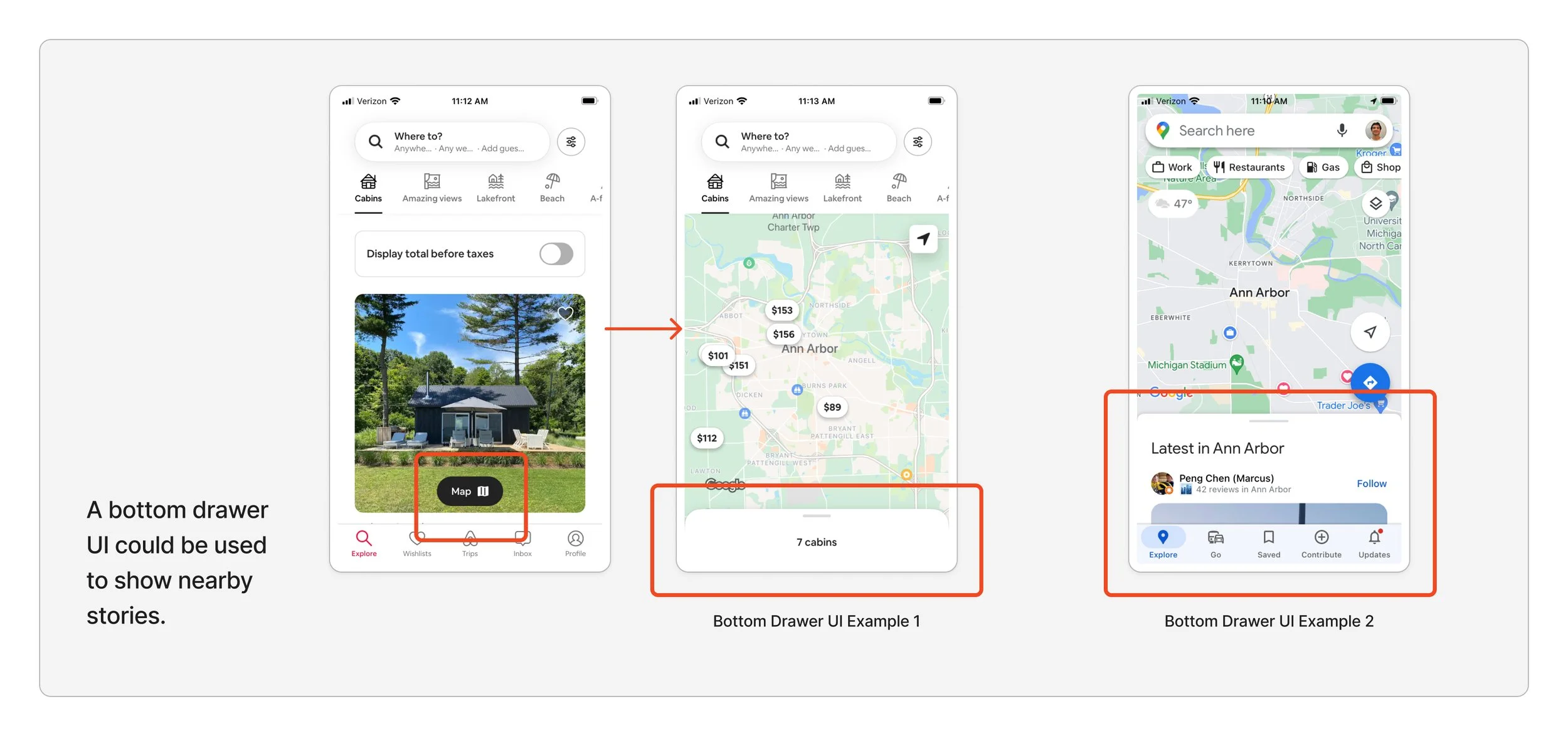Designing a story sharing app for queer communities
We designed a mobile app to help queer people understand their identity and feel a sense of community. Mosaic is an interactive experience that lets users listen to stories by queer people for queer people in their local area.
Role: Interaction designer responsible for user research, wireframing, prototyping and visual design
Timeline: Sep – Dec 2023 (4 months)
Collaborators: 4 other designers and researchers
Tools: Figma, FigJam
What’s the problem?
There's a critical need for a digital platform that provides accurate information, fosters community, and facilitates mentorship to empower young queer people.
Young queer individuals face significant barriers to healthy sexual development due to inadequate or harmful sexual education in schools, often compounded by a lack of supportive queer role models. This leaves them feeling isolated and ill-equipped to navigate their identities and sexual experiences. The absence of inclusive educational resources and safe community spaces contributes to misinformation and negative stigmas, hindering their ability to form healthy relationships and access essential resources.
Our proposed solution
Explore the local queer community
Mosaic provides users with an interactive map of the current community where they are located. As they move to different places the map reflects their current position and the user can only listen to stories that are within their local area. The intention is to promote community stories, encouraging the user to walk around and explore new areas and listen to queer experiences that connect to the environment.
Listen to stories about queer experiences
Within the app, the user can listen to geotagged stories as they walk around, and use the app like similar music services, queuing other stories within the area and allowing stories to play as they walk through the community.
Create stories to share with your community
Along with listening to stories, users can view embedded memories through augmented reality that are related specifically to each story. Users can embed photographs, writings, and illustrations to the physical objects that the listener can view as they listen to their story.
The design process
1. Competitive analysis
2. User interviews and analysis
3. Personas
4. Sketches
5. Scenarios
6. Storyboards
7. User flow diagram
8. Early ideation and brainstorming
10. Usability testing
9. Low-fidelity prototype
Anticipated impact
The largest impact we hope that our design will have, and a scenario we explored in our personas, is that people without queer friends or role models in their daily life who may feel alone in their community will be able to hear and tangibly see the mark that other queer people have left around town. The physical memories that are shown in the AR view will let users literally see the queerness surrounding them. We also hope that users will be able to learn more about real queer experiences through short podcast-like audio bites that will provide more realistic representation, so young queer people won’t have to just rely on inadequate representation in media or school.




